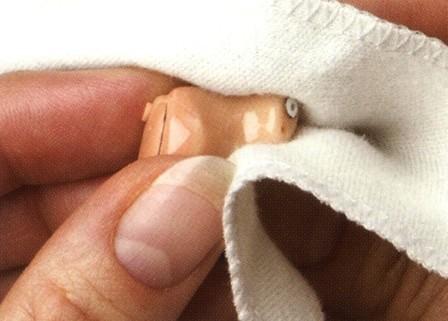Hearing aids are tiny marvels of technology. Despite their small size, they contain a lot of sophisticated parts and perform many advanced functions every second. If you suspect your hearing aids need to be repaired, try these steps before calling your hearing healthcare professional.
Table of Contents
Troubleshoot common hearing aid issues
This detailed troubleshooting guide can help. It also may be useful to review the various parts of a hearing aid, as well, so you know the terminology. If your hearing aid still isn’t functioning properly, the following steps may be completed before calling a hearing healthcare professional:
- Check to ensure the hearing aid is turned on: This seems simple, but check anyway, especially if you are still getting used to wearing and operating your hearing aids.
- Turn up the volume: Make sure the volume control is at the appropriate level and wasn’t accidentally turned down or altered.
- Check the battery: If you have disposable batteries, make sure your batteries are correctly positioned in the hearing aids. Test your batteries or try fresh ones to make sure the problem isn’t with the batteries.
- If a BTE (behind-the-ear) model, inspect the tubing: BTE tubing can sometimes become damaged or worn over time. If hearing aid tubing shows any signs of wear and tear or breakage, your hearing healthcare professional can fix it quickly and easily in their office.
If your hearing aid batteries suddenly don’t last very long, it can indicate you need a repair.
When to get more help for a repair
Despite your best and most diligent efforts, all hearing aids will probably need a repair at some point. Here is when to visit your hearing healthcare professional:
- You have attempted troubleshooting and your hearing aids still aren’t working properly.
- Excessive feedback or whistling could signal an improper physical fit with a custom hearing aid or a BTE earmold. Even if your aids fit well initially, ears can change size and shape over time, especially if you’ve been ill or your weight has changed significantly.
- If one of your hearing aids has been irreversibly damaged, the case has cracked or there are visible holes anywhere on the shell or faceplate.
Your hearing practitioner may be able to make some repairs “in-house,” and then you avoid being without your hearing aids for several days. Sometimes, this just isn’t possible. They can tell you how long it will take to get the aid repaired by the manufacturer and if there are any associated costs if your aids are not under warranty.
How do I get hearing aids repaired?
Preventing the need for repairs: Keep your hearing aid clean

are kept clean.
Because hearing aids are such compact devices, it can be easy for earwax and other debris to become trapped in tiny holes and spaces. To avoid excessive build-up from clogging microphone and sound ports, it’s important to clean the device each day with a clean and dry tissue or cloth.
It is common for earwax to become trapped in the small ports of a hearing aid device, this can cause temporary static sounds or feedback to be heard when in use.
Also, keep your ears clean
In addition to keeping the hearing devices themselves clean, it’s important for you to keep your ears clean, too. Keeping the devices and ears free of debris can lessen the need for frequent hearing aid repairs. Earwax is a completely natural and necessary secretion of the ears, but it can cause trouble if it becomes lodged in ports or crevices of the hearing aids. To keep earwax to a minimum, clean ears with a washcloth daily.
If you suspect your amount of wax is out of the normal range or your hearing devices are becoming clogged on a consistent basis, reach out to your hearing healthcare professional for additional tips or options.
Keep in mind it’s not safe to insert cotton swabs or anything sharp in your ears to clean them. Using these items could push the earwax deeper into the ear or puncture the eardrum.
Lastly, keep hearing aids dry
Prolonged exposure to moisture is the leading cause of repair in hearing aids. Most people don’t realize how much moisture hearing aids can accumulate with daily use. At night, open the battery compartment and remove the batteries to allow aids to air out. If you live in a very humid area, are athletic or perspire heavily, it might be wise to invest in a hearing aid sleeve or sweatband.
Another tool to help keep devices dry is a hearing aid dehumidifier. These inexpensive devices can help keep moisture to a minimum and can possibly prolong the life of hearing aids.
Wash and shower before putting hearing aids in for the day. Use care when applying hair and face products as these can build up on and inside hearing aids. Take hearing aids out when swimming or engaging in water activities.
Need help?
Have you tried all you can and nothing is working? It may be time to get new hearing aids. After all, hearing aids are only meant to be worn 3 to 7 years. They endure lots of wear and tear, and technology improves all the time. Here are more signs you need new hearing aids.
If you currently wear hearing aids and need to find a professional to help with a repair, use our extensive consumer-reviewed directory to find a hearing care professional in your area.


